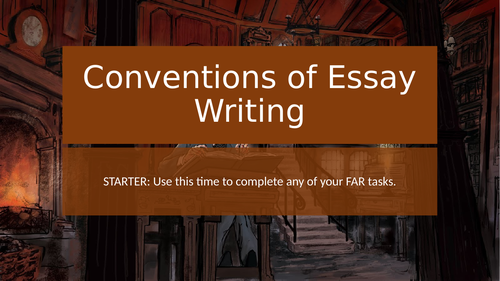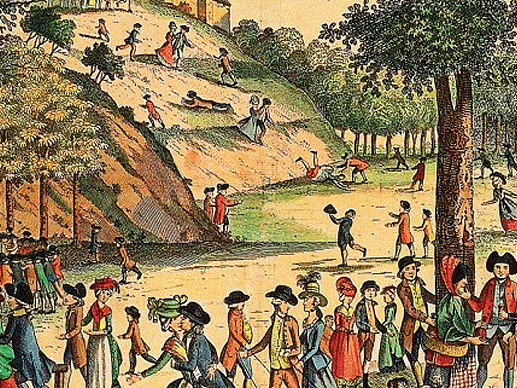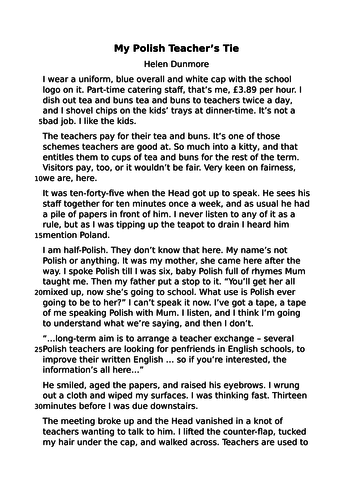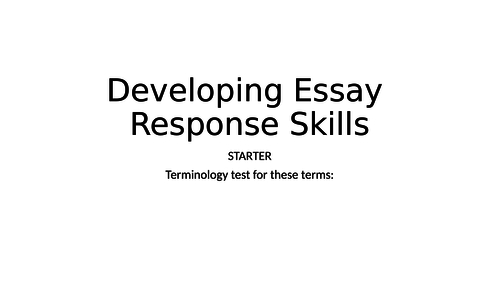
228Uploads
563k+Views
1397k+Downloads
Languages

Exploring Political Speeches (based around the old AQA English Language Spoken Language criteria)
I had SO much fun with this unit of work! It helped that the TA in my class went on to become a local MP for Labour (still is as far as I can tell...). Essentially, this series of 5 lessons - which, by the way, totally went over the 5 lessons I gave myself to teach this - explores a number of different political speeches. Included in the pack are a number of transcripts - Martin Luther King's "I have a dream" speech, Alex Ferguson's farewell speech, Bush's post-911 address to the nation and the transcripts of Clegg, Cameron and Brown from the First Televised General Election Debates (heavy stuff).
I was a little tentative at teaching this to a bottom set year 9 class, but they totally got on board with the debates (they tore shreds out of Brown...) and engaged well with the controlled assessment task at the end.
I know that the controlled assessments are now null and void (a shame really), but the exploration of speeches might be useful to someone out there in the teaching ether...

AQA English Literature DNA resources
There doesn't seem to be much out there for DNA, which is a shame really as it's a great text to study. Attached are ALL of the DNA resources I have created; hopefully this will give you a few different ideas and starting points.
This is a mish-mash of resources from three years of teaching this text across two schools. Some organising and sifting-through is needed here.

Transitional Lesson: KS2 to KS3
One of my old schools did a great job of communicating with their feeder Primary Schools. We would be invited in to teach the incoming Year 7s. We took this a stage further by collaboratively teaching lessons with people from other departments. This lesson is designed to be taught to Year 6 students and combines Art and English. It's quite easy to change this to meet the needs of your own school's transitional needs.
You'll need to download some Manga style pictures and also, somewhat unsurprisingly, you'll need Art resources too.

AQA English Language P2: Section B (using A Christmas Carol)
A series of lessons designed to make sure students have a clear understanding of the “basics” and the “developed” skills and techniques required for EACH of the possible text types they could meet in Section B of the English Language Paper 2 exam. Because my lot were taught A Christmas Carol (and I was trying to kill two birds with one stone by revising this at the same time…), the tasks are all focused on writing within the world of Scrooge. To that end, they may require some editing on the part of the user - hence the reduced price.

AQA English Language P2: Glastonbury vs Greenwich
A simple power-point designed to be used either AFTER a class has sat the AQA English Language Paper 2 Specimen Paper 2, or as part of a walking-mock style lesson where the students mark their work immediately afterwards. It’s cheap because I’ve essentially deposited the contents of the mark criteria on to the power point in such a way that the students can use it it to peer or self-assess. The resource JUST contains the power point.

KS3: Woman In Black: Creative Writing focus
Taught as part of a two teacher approach to a top set year 9 class. I focused on developing creative writing skills, with a particular emphasis on the structural components, whilst my partner teacher focused on the more traditional literature style approach.
The Woman In Black was used as the stimulus for all elements of this unit and the climax is a GCSE English Language Paper 1 style task (not included in this pack as it is part of my school’s assessment pack).
Overall, I found this unit to be really useful in challenging students to think about their creative writing in more than just a reactionary way. The nature of the structure focused questions align with my belief that it is always better to teach the Language Paper 1 Q3 question in the form of a structure-focused creative writing commentary at KS3 level. Hopefully this will provide you with a useful starting point for your own creative writing journey.

AQA English Language Paper 1: The Mill
A PowerPoint designed to be used after students have sat the Section A of the AQA English Language Paper 1 for June 2019. It wouldn’t take much altering to be used as a mock exam itself. The slides are set up to show the model answers from the mark scheme so that students can peer/self assess and give actions and feedback.

AQA English Language Paper 2 Revision Pack (London 2012 vs The Great Exhibition)
Two powerpoints (both alike in dignity…); the larger of the two covers the deconstruction of an English Language Paper 2 Section A mock exam - we go through common mistakes, areas of concern and identify how to improve on what we’ve done. I’ve provided the sources too, so you could use this as the basis of a Section A walking-talking mock; the smaller powerpoint covers speech writing, an area my lot particularly struggled with.
Happy hunting…

AQA A-Level English Language and Literature: Othello - Lesson 2 (Soliloquies)
My second lesson. Here, I focus almost entirely on ACT 2 SCENE 1 and Iago's soliloquies therein. The notes element of the power point pulls a lot of thinking together from across a lot of sources - you'll need these notes to flesh out the tasks. I tie it up with an exam style question at the end focusing on what we can infer about attitudes to women. Quite pleased with how this looks and how it goes.
Bundle

AQA -Level English Language and Literature Othello Bundle
All my Othello lessons (so far). I will keep adding to this as I go.
Bundle

Creative Writing Bundle
A whole mash of creative writing resources - some paid, some not - all in one place!

AQA English Language Paper 1 Section A Mock Exam - My Polish Teacher's Tie
I've found another use for all that knowledge we have about the old AQA English Lit anthology (The Sunlight on The Grass anthology). I have started to turn them into English Language Paper 1 Section A Mock Exams!
This is one of them. There is no mark scheme, but if you use the Paper 1 mark scheme from the AQA website you should be fine.
This one uses the opening of My Polish Teacher's Tie.
Bundle

AQA English Literature Paper 1 Bundle
Jekyll & Hyde, A Christmas Carol and Romeo & Juliet resources PLUS a spreadsheet to track them all.

AQA English Language Paper 1 focused writing tasks
A couple of lessons that focus on improving creative writing skills. I allude to tasks that have already been completed by the students - you can easily edit these to reflect your own tasks. Particularly pleased with the descriptive writing task as it got a bunch of lads who don’t “do” creative writing to talk about their feelings.

AQA English Language Paper 1 Resources - based upon 100% Perfect Girl
A few things first: the mock exam can be found elsewhere on in my resources and I base the lessons off a similar series of lessons focused on Anil. The difference here is that these lessons are very much targeting higher ability students - all of the success criteria draws from the top end of the mark criteria.
I found this series of lessons to be really useful as a way of establishing the skills required to answer each of the Section A questions. The lessons focus less on exam strategy and more on understanding what is required in relation to each question. The kids found it useful.

AQA English Language and Literature: Developing essay response skills to the Paris Anthology section
This is my attempt to engage and develop my Year 12s academic voices in their Paris Anthology related essay responses. The main issue my class had seemed to focus upon when and where to start. What I do is show them how they can place a particular emphasis on one of several potential areas of focus initially. I show them how they could use Mode, Audience, Purpose, each of Grice’s Maxims and each of the different levels of language as a starting point for an analytical response. The attached word document appears to be an “essay”.It isn’t. It’s the collected starting points placed in one document so that the students can focus more on the “how you do it” instead of trying to copy down the best bits.
It worked reasonably well and is suited for a class with similar needs. Hope you find this useful.

AQA English Literature - A Christmas Carol: Complete Unit of Work
The lessons are designed to tie in specifically with the Scholastic Classics version of the text OR the Collins Classroom Classics version, but it wouldn’t take too much to use this with any version to be honest.
Visually, the powerpoints are designed to be eye-catching. Each one is loaded with links to videos, layered with animations and suitably spooky xmas music.
The lessons are ordered via number for your convenience. There is a specific focus on each of the GCSE Assessment Focuses, starting with AO3 (It makes sense, to me at least, to contextualise the story prior to reading it).
The stave lessons each contain definitions of the archaic words (though there is a definite backing off with this the further in you get: as the students get more familiar with the language, they’ll need less prompting with decoding it), as well as a particular focus on key quotations. There are comprehension questions layered throughout, and the first THREE of the stave lessons have an ending task that links to a type of question found in AQA English Language Paper 1 Section A - my class had previously focused on this unit and it made sense to me to keep these skills “hot” so to speak.
The AO specific lessons tie in with the Assessment Objectives for the English Literature course. The AO1 and AO2 lessons assume that the students have read the entire text.
Finally, the theme lessons build towards the students sitting a GCSE Literature style assessment.
I have sourced a lot of ideas from the following pdf file - I wouldn’t feel comfortable trying to pass these ideas off as my own; I include the link so that any person might have the benefit of this resource without having to pay for mine:
http://drbacchus.com/files/christmas_carol/glossary.pdf
There’s about 30+ hours worth of teaching materials in here; enjoy!
Bundle

AQA GCSE Curriculum
Every scheme of work that I’ve made that could be used to teach AQA English Language and AQA English Literature




















